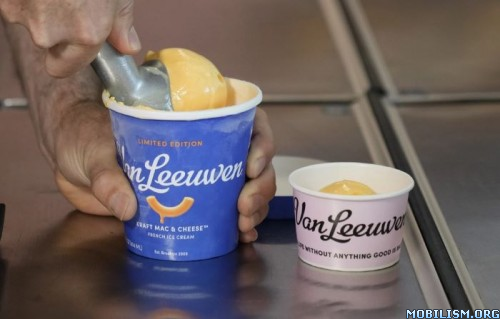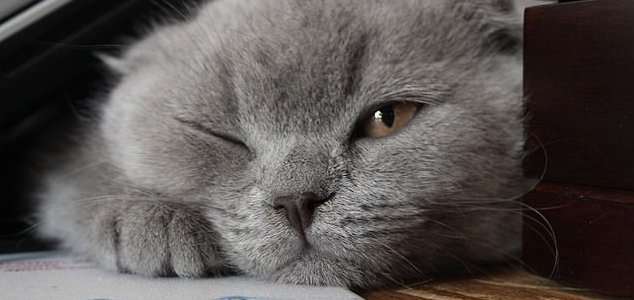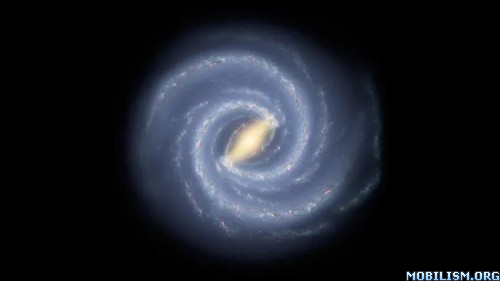Sour Patch Kids Oreos? Peeps Pepsi? What’s behind the weird flavors popping up on store shelves

Weird takes on familiar favorites are showing up more frequently in grocery stores and restaurants as food companies try to keep brands relevant and distinct so they can win space on crowded store shelves
Van Leeuwen Ice Cream usually draws customers with gourmet takes on classics like vanilla and pistachio. But occasionally, the artisanal ice cream maker headquartered in New York slips in what it calls a “shock flavor,” like Hidden Valley Ranch or pizza.
Surprising flavor combinations – think gravy-flavored Jones Soda or Sour Patch Kids Oreos -- are showing up more frequently in grocery stores and restaurant chains.
Hershey recently introduced pink lemonade-flavored Kit Kats, while IHOP and Lay’s brought out Rooty Tooty Fresh n’ Fruity potato chips, designed to taste like strawberry-topped pancakes with a hint of bacon. In the United Kingdom, Little Moons made fish-and-chips mochi ice cream in 2021, while potato chip brand Walkers is known to celebrate Christmas with a Brussels sprout-flavored edition.
Usually, these are limited-time flavors, although occasionally they’re so popular they wind up on store shelves permanently, as Lay’s Flamin’ Hot Dill Pickle chips did in 2019.
While it’s tempting to pass them off as social media stunts, experts say there’s more to the story. Food companies are responding to the changing and expanding tastes of consumers while also trying to keep brands relevant and distinct to win space on crowded store shelves.
“We’re in a really exciting time of flavor development where consumers are not just one thing. You’re not just a sour lover or a sweet lover. You want a little of this and a little of that,” said Kristen Braun, the senior brand manager for Oreo innovation at Chicago-based food and beverage company Mondelez International. “Companies are finding the freedom to explore a little bit more and get more creative.”

Sour Patch Kids Oreos – vanilla cream-filled cookies speckled with colorful bites of the sour candies – are one of about a dozen limited-edition Oreo flavors that Mondelez plans to release this year. Braun said it takes the company one or two years to develop such products, which stay on shelves for about nine weeks. She’s already thinking ahead to future flavors that blur the lines between sweet, salty and spicy.
Oddball pairings aren’t entirely new in the food and beverage industry. Hubba Bubba released a bubble gum-flavored soda in the late 1980s, for example. But manufacturers and their suppliers have gotten more sophisticated and efficient, making it easier to experiment and put out limited-editions more frequently, said Mark Lang, a food marketing expert and associate professor of marketing at the University of Tampa.
Kyle Shadix, who as the corporate executive research chef for PepsiCo, has worked on beverages like Pepsi Maple Syrup and a strawberry shortcake Pepsi sold in Japan, said the members of Generation Z are also fueling innovation. They’re diverse, adventurous and pick up on food trends quickly through social media, he said.
“They’re every chef’s dream to design for,” said Shadix, who is currently experimenting a lot with Mexican, Korean and Japanese flavors. “Gen Z is going to drive us faster. We’re going to start to see even more exploration quicker than in the past because they’re just so open to it.”
Toying with flavors can boost brands in several ways. Sometimes they bring new customers to a brand. They might also nudge buyers to pick up the original flavor, Russell Zwanka, director of the food marketing program at Western Michigan University, said.
“Sour Patch Oreos sound interesting, but nobody wants to risk buying Oreos that don’t taste good, so people buy both,” Zwanka said.
When companies combine brands, they’re trying to build an association in consumers’ minds. Peeps-flavored Pepsi, which came out last year, sends the message that Pepsi is current and fun, Lang said. Mustard-flavored Skittles, which came out last summer, made the 104-year-old French’s brand seem playful.
Enter Kraft Heinz, which approached Van Leeuwen Ice Cream a few years ago about macaroni and cheese-flavored ice cream. Ben Van Leeuwen, the company’s co-founder and CEO, was doubtful at first but found that Kraft’s powder blended well with the Brooklyn-based company’s ice cream.
Van Leeuwen’s Kraft Macaroni and Cheese ice cream came out to rave reviews in 2021 and was re-released for a short time last fall.
“We will only do a shock flavor if we can make it good and distinct. We will not do a shock flavor where it’s just shock in name but taste like vanilla,” Van Leeuwen said.
But novel flavor combinations don’t always work. Van Leeuwen couldn’t eat more than a few bites of his company’s Hidden Valley Ranch ice cream, which contained onion and garlic powders. And shock flavors typically don’t end up on the permanent menu because of their lower “eat-ability,” he said.
“I think you would taste our mac and cheese and you’d say, ‘Oh, that’s good,’ but do you want to take a pint of that mac and cheese from your freezer when you’re watching whatever show on Netflix and eat the entire thing? Probably not,” Van Leeuwen said.
Candy brand Brach’s ran into that issue with its Turkey Dinner Candy Corn, a 2021 limited-edition version of the fall staple that tasted like turkey, stuffing, green beans, cranberry sauce, apple pie and coffee. Katie Duffy, vice president and general manager of seasonal at Ferrara Candy Co., which owns Brach’s, acknowledged there was a “gross-out” factor.
“We have learned from consumers that we don’t want to have something where they eat a few pieces of candy and then they toss it because there’s some things that they don’t want to repeat,” Duffy said. “We want it to be a delicious flavor journey.”
Brach’s recently introduced Easter Brunch-flavored jelly beans, and they hit that mark, she said. The candy beans mimicked the flavors of blueberry maple pancakes, chocolate doughnuts, caramel cold brew, cinnamon rolls, berry smoothies and mimosa cocktails.
Shannon Weiner, senior director of insights and analytics at Ferrara, said the company closely tracks social media to see what flavors are trending. People are increasingly looking for dessert and dairy-flavored candies, she said. They’re also seeking more international flavors like Tajin, a brand of chile-lime spice from Mexico that recently did a collaboration with Pop Tarts.
Lang thinks the more time people spend in restaurants or trying out new foods, the more they seek out unusual flavors.
“We are variety-seeking animals. We constantly are seeking something new and different; it’s in our wiring,” he said. “We like to experiment.”

Weird takes on familiar favorites are showing up more frequently in grocery stores and restaurants as food companies try to keep brands relevant and distinct so they can win space on crowded store shelves
Van Leeuwen Ice Cream usually draws customers with gourmet takes on classics like vanilla and pistachio. But occasionally, the artisanal ice cream maker headquartered in New York slips in what it calls a “shock flavor,” like Hidden Valley Ranch or pizza.
Surprising flavor combinations – think gravy-flavored Jones Soda or Sour Patch Kids Oreos -- are showing up more frequently in grocery stores and restaurant chains.
Hershey recently introduced pink lemonade-flavored Kit Kats, while IHOP and Lay’s brought out Rooty Tooty Fresh n’ Fruity potato chips, designed to taste like strawberry-topped pancakes with a hint of bacon. In the United Kingdom, Little Moons made fish-and-chips mochi ice cream in 2021, while potato chip brand Walkers is known to celebrate Christmas with a Brussels sprout-flavored edition.
Usually, these are limited-time flavors, although occasionally they’re so popular they wind up on store shelves permanently, as Lay’s Flamin’ Hot Dill Pickle chips did in 2019.
While it’s tempting to pass them off as social media stunts, experts say there’s more to the story. Food companies are responding to the changing and expanding tastes of consumers while also trying to keep brands relevant and distinct to win space on crowded store shelves.
“We’re in a really exciting time of flavor development where consumers are not just one thing. You’re not just a sour lover or a sweet lover. You want a little of this and a little of that,” said Kristen Braun, the senior brand manager for Oreo innovation at Chicago-based food and beverage company Mondelez International. “Companies are finding the freedom to explore a little bit more and get more creative.”

Sour Patch Kids Oreos – vanilla cream-filled cookies speckled with colorful bites of the sour candies – are one of about a dozen limited-edition Oreo flavors that Mondelez plans to release this year. Braun said it takes the company one or two years to develop such products, which stay on shelves for about nine weeks. She’s already thinking ahead to future flavors that blur the lines between sweet, salty and spicy.
Oddball pairings aren’t entirely new in the food and beverage industry. Hubba Bubba released a bubble gum-flavored soda in the late 1980s, for example. But manufacturers and their suppliers have gotten more sophisticated and efficient, making it easier to experiment and put out limited-editions more frequently, said Mark Lang, a food marketing expert and associate professor of marketing at the University of Tampa.
Kyle Shadix, who as the corporate executive research chef for PepsiCo, has worked on beverages like Pepsi Maple Syrup and a strawberry shortcake Pepsi sold in Japan, said the members of Generation Z are also fueling innovation. They’re diverse, adventurous and pick up on food trends quickly through social media, he said.
“They’re every chef’s dream to design for,” said Shadix, who is currently experimenting a lot with Mexican, Korean and Japanese flavors. “Gen Z is going to drive us faster. We’re going to start to see even more exploration quicker than in the past because they’re just so open to it.”
Toying with flavors can boost brands in several ways. Sometimes they bring new customers to a brand. They might also nudge buyers to pick up the original flavor, Russell Zwanka, director of the food marketing program at Western Michigan University, said.
“Sour Patch Oreos sound interesting, but nobody wants to risk buying Oreos that don’t taste good, so people buy both,” Zwanka said.
When companies combine brands, they’re trying to build an association in consumers’ minds. Peeps-flavored Pepsi, which came out last year, sends the message that Pepsi is current and fun, Lang said. Mustard-flavored Skittles, which came out last summer, made the 104-year-old French’s brand seem playful.
Enter Kraft Heinz, which approached Van Leeuwen Ice Cream a few years ago about macaroni and cheese-flavored ice cream. Ben Van Leeuwen, the company’s co-founder and CEO, was doubtful at first but found that Kraft’s powder blended well with the Brooklyn-based company’s ice cream.
Van Leeuwen’s Kraft Macaroni and Cheese ice cream came out to rave reviews in 2021 and was re-released for a short time last fall.
“We will only do a shock flavor if we can make it good and distinct. We will not do a shock flavor where it’s just shock in name but taste like vanilla,” Van Leeuwen said.
But novel flavor combinations don’t always work. Van Leeuwen couldn’t eat more than a few bites of his company’s Hidden Valley Ranch ice cream, which contained onion and garlic powders. And shock flavors typically don’t end up on the permanent menu because of their lower “eat-ability,” he said.
“I think you would taste our mac and cheese and you’d say, ‘Oh, that’s good,’ but do you want to take a pint of that mac and cheese from your freezer when you’re watching whatever show on Netflix and eat the entire thing? Probably not,” Van Leeuwen said.
Candy brand Brach’s ran into that issue with its Turkey Dinner Candy Corn, a 2021 limited-edition version of the fall staple that tasted like turkey, stuffing, green beans, cranberry sauce, apple pie and coffee. Katie Duffy, vice president and general manager of seasonal at Ferrara Candy Co., which owns Brach’s, acknowledged there was a “gross-out” factor.
“We have learned from consumers that we don’t want to have something where they eat a few pieces of candy and then they toss it because there’s some things that they don’t want to repeat,” Duffy said. “We want it to be a delicious flavor journey.”
Brach’s recently introduced Easter Brunch-flavored jelly beans, and they hit that mark, she said. The candy beans mimicked the flavors of blueberry maple pancakes, chocolate doughnuts, caramel cold brew, cinnamon rolls, berry smoothies and mimosa cocktails.
Shannon Weiner, senior director of insights and analytics at Ferrara, said the company closely tracks social media to see what flavors are trending. People are increasingly looking for dessert and dairy-flavored candies, she said. They’re also seeking more international flavors like Tajin, a brand of chile-lime spice from Mexico that recently did a collaboration with Pop Tarts.
Lang thinks the more time people spend in restaurants or trying out new foods, the more they seek out unusual flavors.
“We are variety-seeking animals. We constantly are seeking something new and different; it’s in our wiring,” he said. “We like to experiment.”
























